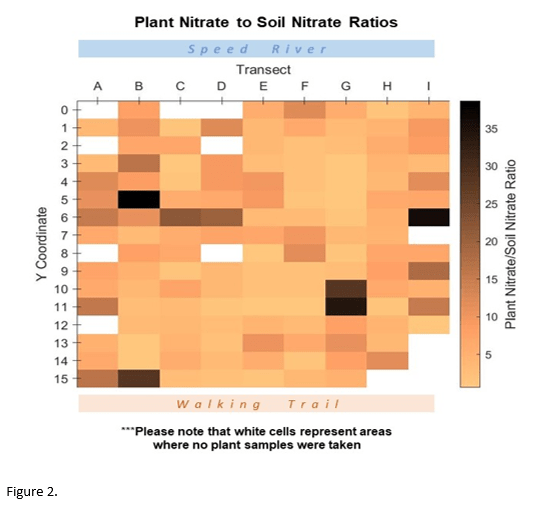–by Thanuja Thavarasa
Living organisms need a variety of nutrients in order to grow. For plants, nitrogen is an essential nutrient. Nitrogen, found in the form of nitrate (NO₃ˉ), is taken up through plant roots from the surrounding soil. Thus, we thought it would be interesting to explore the relationships between soil nitrate concentrations and the plant nitrate levels in a riparian area adjacent to the Speed river, right in the middle of the city of Guelph.
On June 12th and 13th, 2019, Aidan and I headed to our site where we measured and created our own 16 m by 30 m sampling grid that extended from the edge of the river to a walking trail. In Figure 1, every interval along the X-coordinate and Y-coordinate axes is two meters, and the apices of the grid correspond to where a soil sample and, when available, a plant sample, were taken. Figure 1 and Table 1 show were we collected 144 soil samples and 131 plant samples.
After collecting all the samples, we returned to the lab to analyze their nitrate concentrations. The soil was passed through a 2 mm sieve and then 5 g of sieved soil was mixed with 25 mL of tap water. Once the mixture set for 5 minutes, a disposable pipette was used to extract liquid from the top of the mixture and then transferred to the Laqua Twin nitrate sensor. Similarly, once sap was extracted from plant samples using a garlic press, the sap was put into the sensor to be analyzed. Figure 2 illustrates plant to soil nitrate ratios with context to their location. Further analysis of the data is in the works. Keep an eye out for Aidan and I at a potential future conference!



